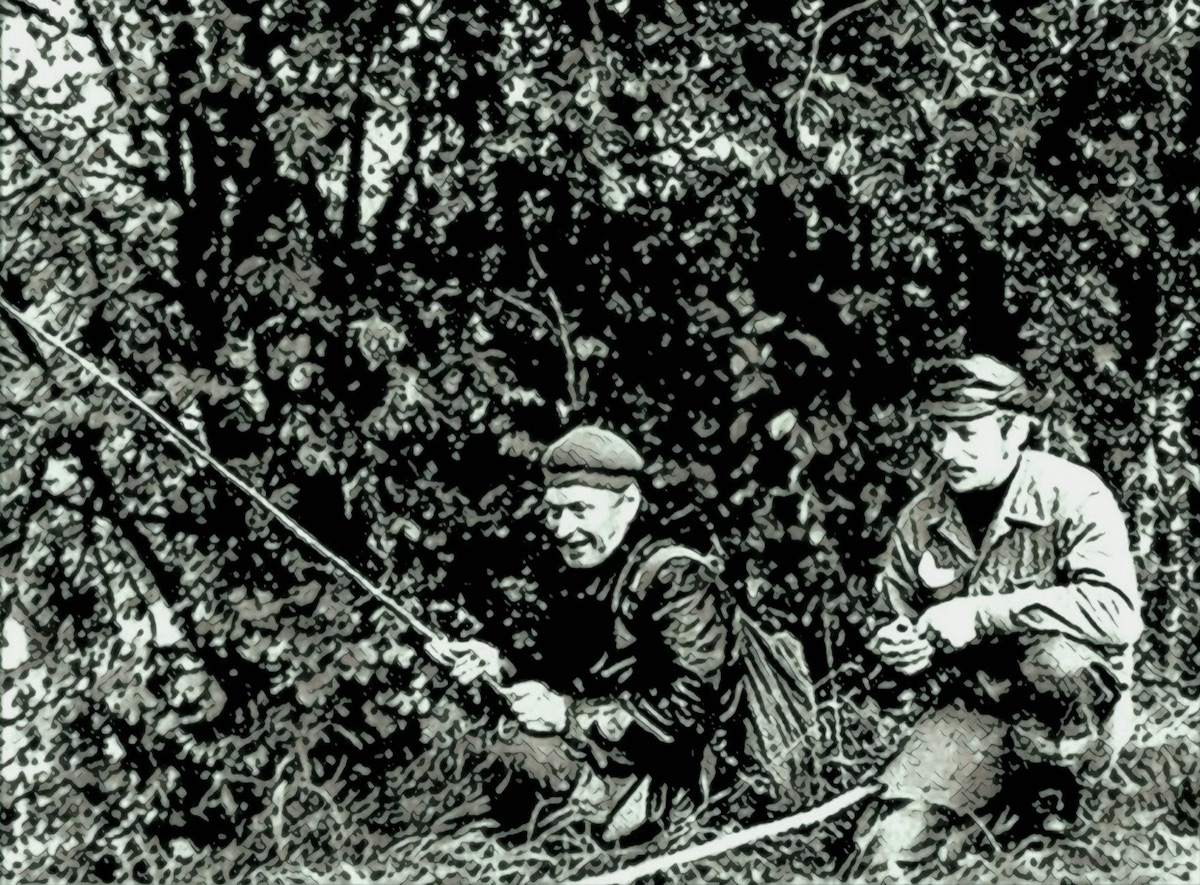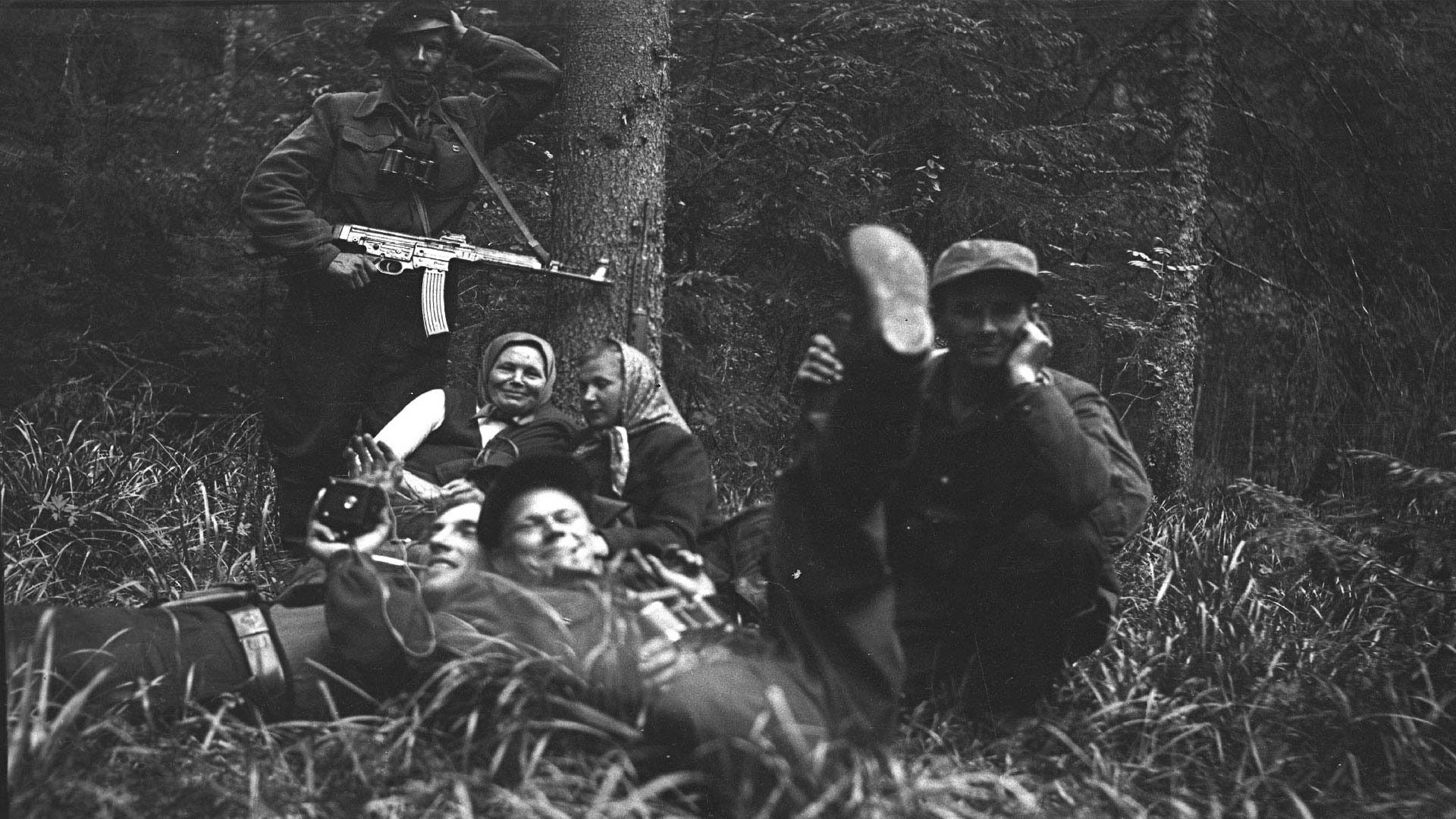When the KGB men, who were posing as fishermen, eased Sabbe’s vigilance to the extent that he relaxed, then tried to arrest him, Sabbe proved why he had remained a free man for 34 years, after Estonia fell to the Red Army in the fall of 1944. Sabbe chose his own way out by jumping into the Võhandu. The KGB, which documented the attempted arrest with photographs, found his body wedged under a submerged log. They claimed that he drowned attempting to escape. However, many suggested that Sabbe’s action was deliberate – the Võhandu is a slow-moving river, shallow and narrow at the spot where Sabbe was found fishing. Rather than face trial, imprisonment or execution it may have been that he took his own life, master of his destiny to the end.
Priit Vesilind was the first to bring large-scale attention to Sabbe’s death in National Geographic magazine (“Return to Estonia, #4, April, 1980, pp 485-511) a year and a half after the event. Historian and politician Mart Laar’s splendid “War in the Woods. Estonia’s Struggle for Survival 1944-1956”, translated by Tiina Ets, appeared in 1992 (a year before the Estonian language publication of the work, Metsavennad) details extensively the actions of men (and a few women) who fought the communists post WWII while living off the land. The book includes the before and after photos of Sabbe – smiling at the camera with the KGB officer at his shoulder, then his retrieved remains. He died a free man.
Even though the Soviet Union has crumbled, Estonia has regained freedom; the KGB legacy has not been forgotten. Indeed, Russia’s President is a former KGB man who has subverted democracy for decades while keeping an iron fist on power. Last month a prominent KGB officer, behind many such operations, although not personally present at Sabbe’s attempted arrest and death died. Only a few, it seemed, publicly remembered his work as a senior officer in the organization. In fact as is often the case, the past of An(t)ti Hans Taluri was not mentioned at all in an obit published in Postimees Estonia’s leading daily newspaper on June 25th. Except for one telling fact. His cronies actually had the chutzpah, gall, to identify themselves as “õngevennad”, first name only, just in case they might be identified as KGB men.
Journalist Holger Kaljulaid expressed outrage and brought attention to this fact by twitter (https://twitter.com/KaljuLaid/status/1276797317262143488 ) He added to
how “angling brothers” bid their crony a final adieu more detail in a lengthy recent e-mail. Even if we are not to speak ill of the dead, it seems that in the modern world certain evildoers are singled out, others not. At the time of Operation Anglers Taluri had already been working for the KGB for over 10 years in Tartu. The city was responsible for the entire southeastern area of Estonia. Indeed, Taluri was the last head of the “Tartu Railway” KGB unit, so-called as it ruled over the area that the railway fed, including Võrumaa from 1982-1991, when Estonia regained independence.
Kaljulaid called Taluri a devil (pisike kurat who did his utmost to suppress the spirit of the literati in Tartu, Estonia’s university city. He notes that among those Taluri beleaguered were dissident Mart Niklus, journalist and later editor-in-chief of Edasi, to be renamed Postimees Mart Kadastik and poet Jaan Kaplinski. Taluri harassed, then arrested Niklus, which resulted in the latter’s imprisonment in Siberia. He also was responsible for the demise of political prisoner Jüri Kukk, who famously went on a hunger strike protesting the regime’s cruelty while imprisoned in a Soviet labour camp at Vologda, resulting in his death. And that was not enough for Taluri – he continued to torment Silvi Kukk, the widow of the principled Estonian professor of chemistry. Both Kadastik and Kaplinski have chronicled their interactions with Taluri and his attempts to subvert them in their memoirs.
For Holger Kaljulaid the final indignity came after Estonia regained independence. Citing dissident Viktor Niitsoo, who was present when members of the Home Guard (Kaitseliit) and ERSP, the party with perhaps the largest numbers of dissidents as their members entered the Tartu KGB building on August 26, 1991 in hopes of having the KGB surrender their weapons and archives. Taluri smirked – too late, people (“hiljaks jäite!”), suggesting that much of the archival material had either been removed or destroyed. A day later, according to Niitsoo, some 20 “personal weapons”, ammunition and other such items were, in fact, handed over to the Tartu Police Prefect Gero Kartau. Negotiations continued, however, over surrendering archives.
Taluri used his experience to advantage, becoming the security chief of the Estonian Landbank (Eesti Maapank). Later he was the safety (tööohutus) specialist for the Tartu Kivilinna shopping and business centre. After that he was responsible for the maintenance and security of another such complex, the Tartu Lõunakeskus. He lived a sweet life, never having to face responsibility for his actions. Kaljulaid notes the irony of where Taluri lived – in a quiet, luxurious apartment building at Riia maantee 15a, set back from the street, and but a mere stone’s throw from the infamous “Grey House”, where the KGB tortured and executed liberty-minded Estonians. Now the basement of the building is the KGB Cell Museum. Having visited the museum in 2014 the undersigned can attest to how the cells, where one could not either sit or lie down, where prisoners were kept for days, exemplify cruelty. The entire museum merits a lengthy visit, to remind us of what the Soviets were capable of.
Taluri was an Estonian national who by accounts enjoyed his work as a KGB officer. We need to be reminded that he was not alone in this regard. And emphasize that almost 29 years after regaining Estonia’s freedom one’s individual and collective past should be remembered. Not only by the fond memories of coworkers, anglers of humans. Not fish.
Tõnu Naelapea, Toronto




